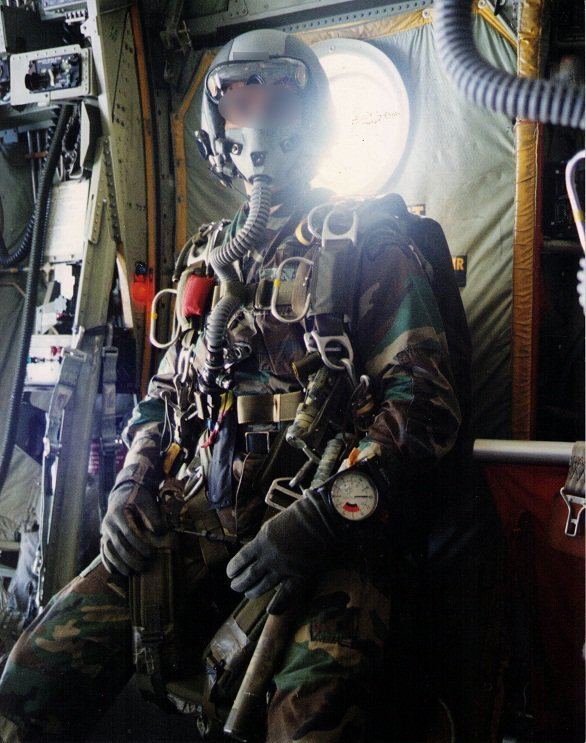Active 1984 - Present Size One company | Country United States Garrison/HQ Fort Benning, GA Type of business Special Operations | |
 | ||
Role Special/Close Target Reconnaissance Part of Special Troops Battalion 75th Ranger Regiment Joint Special Operations Command United States Army Special Operations Command United States Special Operations Command Engagements Gulf War, United States invasion of Panama | ||
The 75th Ranger Regiment's Regimental Reconnaissance Company (formerly known as Regimental Reconnaissance Detachment/RRD) is a unit that has rumored to be the newest operational member of the Joint Special Operations Command. The unit is believed to have become part of JSOC in 2007 due to its extensive training and unique capabilities to conduct special reconnaissance and close target reconnaissance (CTR) operations.
Contents
Disposition
Based out of Fort Benning, GA RRC is among the premier special reconnaissance units of the U.S. military.
RRD, as it was originally called, was activated in October 1984 with the formation the 75th Ranger Regiment Headquarters at Fort Benning, GA. The detachment was tasked with providing worldwide reconnaissance and operational preparation of the environment in support of the 75th Ranger Regiment and other units within USASOC and JSOC. Traditionally RRD was divided into three six-man teams, each team to support each of the three Ranger battalions. The unit has three primary tasks: Active Reconnaissance, Surveillance, and Direct Action. While performing these tasks, the teams can:
When the 75th's Regimental Special Troops Battalion was officially activated in October 2007, RRD changed its name to the Regimental Reconnaissance Company (RRC) and opened its selection course to any soldiers in the U.S. Army who met the established pre-requisites.
Training and Selection
Since the unit's inception in 1984; the only candidates eligible for "operational" duty with RRC were members of the 75th Ranger Regiment who were traditionally seasoned Ranger infantrymen with the rank of E-6 or above. In 2007 this traditional selection practice changed when RRC was "supposedly" placed under JSOC's umbrella. The RRC selection course for operational-based positions is now open to any male soldier who is Ranger School and Airborne qualified as well as graduate of the Reconnaissance Surveillance Leaders Course (RSLC). This was done in an effort to attract more reconnaissance soldiers from the U.S. Army, primarily from the Long Range Surveillance/LRS units within conventional Army forces.
Following the three-week selection course which is administered twice a year (March and September), the candidates are thrust into an intensive 34-week operator training course that includes free-fall training, computers, advanced communications, digital photography, photo editing, reconnaissance reporting formats, fieldcraft and stalks, infiltration and exfiltration methods, close-air support, advanced driving techniques, demolitions, tactical man-tracking, and advanced field medical techniques.
Combat operations
It is assumed that RRD/RRC was involved in Operation Just Cause in Panama in 1989 and Desert Shield/Storm in 1990/1991 as elements of the Ranger Battalions were deployed in both conflicts.
In 1994 the 1st and 2nd Battalions and a Company of the 3rd Battalion were en route to Haiti. The operation was canceled within five minutes of its commencement due to successful negotiations. While the Ranger Battalions were sent home, a RRD team was forward deployed to provide reconnaissance capabilities for Operation Uphold Democracy.
On 24 November 2000 the 75th Ranger Regiment deployed Regimental Reconnaissance Detachment Team 2 and a command and control element to Kosovo in support of Task Force Falcon.
RRD has been constantly deployed to Afghanistan in support of Operation Enduring Freedom as many of their skillsets have proven to be invaluable to the warfighting effort. The RRD was placed under JSOC command to conduct Special Reconnaissance for all JSOC units.
In November 2001, during the invasion of Afghanistan, the 75th Ranger Regiment carried out its second combat parachute drop into Afghanistan: a platoon-sized Ranger security element, including the Regimental Reconnaissance Detachment Team 3 conducted the missions: Objective Wolverine, Raptor and Operation Relentless Strike. The Regimental Reconnaissance Detachment Team 3 conducted a combat military freefall parachute drop onto Wrath Drop Zone in southeast Afghanistan on 10 November 2001. This was conducted in order to establish a Flight Landing Strip for follow on combat operations. Regimental Reconnaissance Detachment Team 3 conducted a combat static line parachute drop onto Shiloh Drop Zone in southeast Afghanistan on 21 November 2001. This was conducted in order to establish a flight Landing Strip for follow on combat operations.
In July 2004, Regimental Reconnaissance Detachment Team 3 conducted a combat military freefall parachute drop onto Tillman Drop Zone in southeast Afghanistan in order to emplace tactical equipment.
In 2006, a six-man RRD (Regimental Reconnaissance Detachment) team from the attached to the JSOC Task Force inserted into the Hindu Kush mountain range after intelligence indicated an insurgent chief, Haqqani, would be entering Afghanistan from Pakistan. After establishing an OP at a position almost 4,000m above sea level, the RRD team waited and watched for their target, as insurgents arrived into the area, the Ranger team was spotted and fired upon. In response, the RRD's attached JTAC called in an orbiting B-1B strategic bomber to 'pummel' the insurgents, an estimated 100 were killed in the airstrikes but Haqqani was not among them.
On 11 July 2009, Regimental Reconnaissance Company Team 1 conducted a combat military freefall parachute drop with tandem passenger in Afghanistan in order to emplace tactical equipment.
